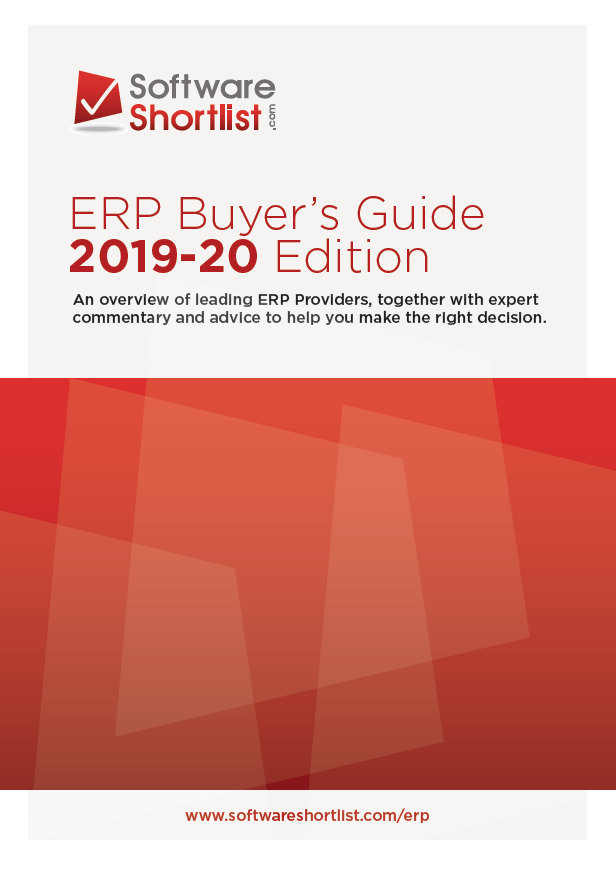If you are considering buying (or renting) an ERP system, then a good place to start is to complete a cost-benefit analysis. When properly done it will protect you from acquiring a system that would lose money instead of earning it. It is also a discipline that is as much about completing the exercise as it is about the document that is produced at the end.
The costs of an ERP system
The costs of an ERP system consist of many elements:
- The acquisition price. That is the money you pay when you buy licenses to use a system. Sometimes you cannot buy a system, but you can hire it for a monthly fee.
- Maintenance. If you are renting the software (Software-as-a-Service or SaaS) then the rental fee will include ongoing updates and support, but if you buy a perpetual license outright, you will also need to pay for maintenance which is typically 20 percent of the up front license cost.
- Business analysis resources. ERP suppliers know their products but they do not know your business. Translating how your business works into how the system works is a core component of any ERP project. Documenting your base requirements, redefining processes or innovating with new systems capabilities all require analytical people that can bring systems thinking to drive the project team toward the end goal. They will be needed right at the outset to assist with your evaluation and selection project.
- Data analysis. Similar to BAs, a data analyst is needed to supply the new system with good clean data that conforms to the needs of the new system.
- The costs of customizing the system. An ERP system can be used in different ways. The supplier changes the settings of the system in such a way that it suits your company’s operation. This can be a time consuming job. It requires not only the efforts of one or more consultants of the supplier but also the cooperation of some of those members of your staff who have an excellent knowledge of the way the company operates (and can communicate it).
- Infrastructure needed to run the software. This used to be a review of the server capacity you had available and whether it needed upgrading or replacing. Nowadays, most ERP systems are either SaaS or are supplied by partners that specialize in hosting the ERP system. But don’t forget your desktop and mobile equipment, network infrastructure, shop floor consoles or dashboard screens, all of which may need buying or upgrading to modern standards.
- Testing. The system must be tested technically and functionally after installation. The supplier will do the former, and test that screens do what they were designed to, but the participation of experienced staff will be essential to ensure the business can complete the transactions it needs.
- Training. Your staff must be trained to use the system, and while ‘train-the-trainer’ might sound like a simple approach, it is a lot of expectation to load on staff that do not otherwise have training experience. Specialist resources may be required, and they may need to be included in the project team so they understand the why behind processes being designed a particular way.
- Change management. Arguably an ERP project is by definition an exercise in change management, but do not underestimate the importance of bringing your people along for the ride. Again, this might take specialist resources to change roles, working procedures and even people.
- The actual transition to the new system can result in extra costs retiring old systems and the like.
- A maintenance contract is often obligatory.
- Make an allowance for unforeseen costs.
Quantify all these costs and transform them into total monthly costs.
The benefits of implementing an ERP
Don’t get gloomy reading through the previous section on costs – there are certainly benefits to installing an ERP system and they can be very considerable:
- When properly customized an ERP can make the procedures of your company much leaner and streamlined by eliminating re-work and manual handling, thus reducing labour costs.
- In a manufacturing environment, a just-in-time delivery policy can be realized, reducing the need for keeping stock. This will free up capital for other use and your costs of running your warehousing operations will decrease.
- An ERP system, with some built-in intelligence (rule-based procedures) can increase the reliability of your company considerably and can help you with creating loyal clients. You also will be an attractive partner for other players in your field of business. Remember that it costs a lot less to retain an existing customer than to acquire a new one.
- Systems intelligence and more automated processes may reduce your reliance on expensive skilled workers, reducing labour costs through the use of lower-cost workers.
- A good working ERP system increases your company’s capability to keep up with a strong growth of the business. This reduces the need for extra office manpower when growth occurs, and enables you to capture significant new revenue opportunities.
- Modern systems are much more open. Being able to integrate data streams with your customers and suppliers opens a world of automation and data analysis that enable entirely new modes of operation or business models
Quantify the benefits and transform them into total monthly benefits.
A word of caution: be conservative and prudent with estimating the value of the future benefits. Overly optimistic benefits may prove elusive during implementation and create unrealistic expectations that are career limiting.
Now you can ‘easily’ compare the total monthly costs with the total monthly benefits and the outcome will soundly underpin your decision.
p.s. it’s not that easy! You will probably end up with a lot of hard costs and very few hard benefits. Don’t despair! Having completed the exercise you will be much better armed to answer questions from internal stakeholders and negotiate with potential suppliers. Include in your business case a vision of what capabilities you will gain with access to modern systems. This will often be enough to corral senior leadership around the plan and garner the necessary support.
Good luck.
Further reading: Best Practise ERP Selection and Evaluation



